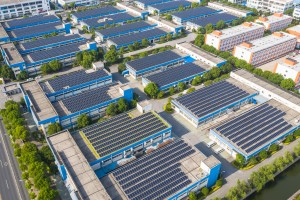This round of going abroad for China’s photovoltaic industry is described from “made in China, sold globally” to “global manufacturing, global selling”.
Since the beginning of this year, Chinese photovoltaic companies have gone further. Within a few months, the five leading components have entered the US market. In September, Trina Solar announced an investment of more than $200 million to build a solar PV manufacturing plant with an annual capacity of 5 GW in the United States.
In the view of module companies, the US market due to the existence of certain trade controls and tariff barriers, is a high-profit market in short supply, and the biggest difficulty is to obtain admission tickets.
At present, the domestic industry-wide capacity expansion has reached a certain stage, and it is the general trend for photovoltaic to go to sea. The strong global demand is the development of China’s photovoltaic companies in the blue Ocean, the purpose of going to sea is also to expand the larger market. In less than a year, the five leading components have gathered in the United States, a major overseas market.
At the beginning of this year, JA Technology announced the construction of a 2 GW photovoltaic module plant in Arizona, the United States, which is expected to be put into operation by the end of the year. In March, Longi Green Energy announced it would work with US clean energy developer Invenergy to build a component plant in Ohio with an annual capacity of 5 gigawatts. In the same month, JinkoSolar also expanded its U.S. module factory and will invest $81.37 million in a new solar module production line with an annual output of 1 gigawatt in Florida. Leading companies are expanding their base in the United States. In June, Atlas announced that it would build a 5 GW solar PV module plant in Mesquite, Texas. Three months later, Trina Solar’s plans for a solar PV manufacturing plant in Texas also surfaced.
“The size of the United States market ranks in the forefront of the world, and was originally the main overseas market for Chinese enterprises, and various restrictions have caused everyone to ship very crowded.” At present, companies set up factories in the United States is more of a trial nature, and the production capacity is basically a component – the initial investment and technical content of this link are relatively low, and the capacity scale of the investment is also small, mostly in the 2 GW to 5 GW. In other destinations, enterprises generally start from 10 gigawatts of investment and construction capacity.
In addition to the United States, emerging markets with promising future potential such as the Middle East and Latin America are also attracting Chinese enterprises to dig gold. LAN Tianshi, co-chief executive of GCL, revealed in September that it was in advanced talks with Saudi Arabia to open the company’s first overseas factory. In October, silicon chip manufacturer TCL Central announced the signing of a joint development agreement with Saudi enterprise Vision Industries, and the two sides will promote the implementation of the joint construction of crystal chip projects in Saudi Arabia.
From January to September of this year, China’s cumulative exports of photovoltaic modules reached 157.7 GW, an increase of 29.9% compared to the same period last year. The four major markets of Europe, Asia Pacific, the Americas and the Middle East&Africa imported 85.3 GW, 33.4 GW, 22 GW and 10.3 GW of components to China in the first three quarters, respectively.
With the modules manufactures entering oversea local market, more and more Solar Mounting Bracket manufactures are considering invest oversea. GRT is also considering invest 1-2 Solar Mounting Racking factoires outside of China. If there are any intention for cooperate, welcome contact.
Post time: Nov-15-2023
